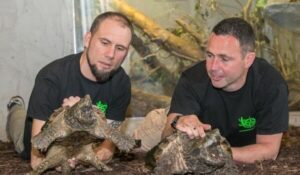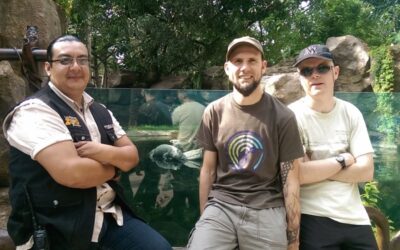Glamorous Glass frogs. Jewels of the forest.
It’s true to say that until recently my herpetological interests focussed primarily on reptiles, well snakes in fact. That is until my regular forays to Central America, and the neotropical forests of Guatemala started two years ago in 2012.
Since then my interest in amphibians has been well and truly piqued. Having said that, one group of neotropical frogs had already captured my imagination since my first visit to Costa Rica in 2010. Throughout the neotropics you can find, if you are lucky, little translucent green jewels known as glass frogs.
They get their name from their completely transparent undersides which are so clear that you can see all their internal organs. There are approximately 150 species of glass frogs that are found from southern Mexico to through to South America as far as northeastern Argentina (Köhler 2011).
Only one species, however, makes it as far north as Guatemala and Mexico, the northern glass frog (Hyalinobatrachium fleischmanni). It also has one of the widest distributions of any glass frog species and is found throughout Central America and into South America.
During our first night in the cloud forests of Alta Verapaz in June 2014 we saw two individuals. Both were new metamorphs and had only recently emerged from the forest stream we were surveying. One even had its long tail in tact, it must have only been out of the water a few hours at most.
What struck me the most while looking at the photos I had taken is that not only are glass frogs transparent from below but also translucent from above, you can see their spinal column and some internal organs in the photos.
Glass frogs are truly incredible creatures. I look forward with anticipation of seeing more in our conservation project at Community Cloud Forest Conservation
2020 Update
Since that first exploration of the cloud forests in 2014, we have managed to locate many adult northern glass frogs – it took us a while to master the technique as they are incredibly difficult to find. Unlike many frog species which sit on the top of leaves or on the stems and branches of plants where they can be easily located, glass frogs like to sit upside down on the underside of leaves. This makes them incredibly hard to find, even when you are standing right next them – you have to be looking in exactly the right direction and at the right height to see them. This is further complicated if you happen to be standing next to a calling male because their high pitched peeping goes right through your head making it difficult to think straight.
Thankfully since we found our first adult, we now have a much higher encounter rate, and regularly find males calling in a stand of bamboo overhanging a small fast flowing stream. Vegetation overhanging fast moving water is known to be a favoured breeding ground for glass frogs. They lay their eggs on leaves over the water. The egg masses that the females lay are then guarded by the males until they hatch and drop safely into the water.
In other glass frog news, a recent taxonomic paper reviewed the status of Hyalinobatrachium fleischmanni, the northern glass frog. As if often the case with species that have large geographic distributions the species that we refer to as one thing, is in fact multiple species that cannot easily be identified apart from each other based on how they look. This situation is referred to as a‘species complex’. Modern genetic techniques sometimes allow us to detangle a species complex, and that is exactly what Mendoza and his team have done with the species complex of the northern glass frog. In a paper published this year, it was established that the populations of northern glass frog found from Honduras to Mexico were in fact a separate species and been named Hyalinobatrachium viridissimum.
This separation is important from a conservation perspective because a smaller geographic range for the new species may well help with conservation efforts. due to its huge geographic range the northern glass frog, as it was previously understood, was considered as Least Concern by the IUCN, this made it very difficult to put conservation priorities on the species even though populations have been declining locally. This change will in taxonomy will hopefully help the conservation of what is now several extra species of glass frog.
Indigo Archives: First Published 28 December 2014
(Köhler, G. 2011. Amphibians of Central America. Herpeton Verlag, Offenbach)

Hyalinobatrachium fleischmanni – Fleischmanns glass frog

Hyalinobatrachium fleischmanni – Fleischmanns glass frog
















0 Comments